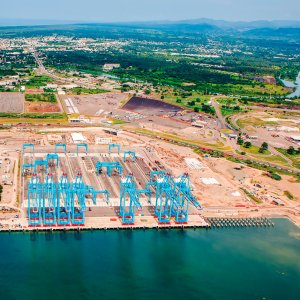Transforming Middle-Income Housing

STORY INLINE POST
Q: How do you mitigate the risks of a housing market crash?
A: Our market differs to the one exposed to the US housing market crash of 2008. Houses were being built for the population in the lowest income bracket on the outskirts of cities. The average price of our houses is MX$1.5 million (US$78,947), ranging between MX$700,000-3 million (US$36,842-157,894). We are aiming at the middle income segment in Mexico City, which has a huge demographic growth of families. This creates a rising demand for housing and a market with more demand than supply. Mexico City has the largest mismatch between supply and demand. Mexico City demands more than 56,000 middle, mid-high and high-income residential homes annually, according to SOFTEC. This is due to the 40,000 marriages and 10,000 divorces per year, along with other demand factors. There
are less than 15,000 new apartments being built per year in Mexico City, which is where we spotted our opportunity.
There are many challenges to building in Mexico City, such as finding land, obtaining the zoning permits, and dealing with federal, central and local entities. If a parcel of land is within a historical zone then we must deal with INAH and INBA. It is also a challenge to build within a city, as we need to manage relationships with neighbors who have been living in the neighborhoods where we build for a very long time. We have learned to do this over the years and it has helped us grow in the market. To maintain favorable relationships with our neighbors and develop more sustainable communities, we allocate 2 percent of our budget toward building urban equipment and infrastructure outside our sites.
Q: What is the top consideration for developing a growing city?
A: Developers need to take into consideration nearby social factors. Interconnected public spaces and transportation are a way of contributing to society. It is not enough to simply have an ecological conscience. New zones also need to take public spaces into consideration. The funny thing is that colonial conquistadores 500 years ago were more efficient at urban planning than modern designers. The older sections incorporate more public spaces while the newer ones do not. Mexico City’s oldest neighborhoods have more parks and squares for communities to socialize and where people can easily walk or cycle. This used to be an important part of urban planning that got lost in modernization. As the city grows, the idea is to continue developing it by including more public spaces. Verticalization is another important urban strategy but it must remain sensible with moderate land use. Companies need to ensure their projects have an adequate number of units to avoid oversaturating the market. The government should request developers execute urban impact studies that evaluate how the area will be affected and demand mitigation strategies for all projects.
Q: What was Arquitectoma’s approach when designing the Chapultepec Uno building?
Q: What are the trends in the way people are purchasing their homes?
A: Around 30 percent of what we sell goes through INFONAVIT, another 30 percent is through FOVISSSTE and the remaining 40 percent through bank loans. There is a trend in the middle income segment in which people are moving away from using INFONAVIT loans and toward bank loans as they are the least expensive. We have products in Mexico that are competitive compared to other parts of world. These include fixed payment terms of 25 or 30 years in pesos with low interest rates. Interest rates for loans and mortgages have not yet increased despite the fact that reference interest rates have risen.
Q: How do you fund your housing developments?
A: We used to have private investors who fund projects individually. About five or six years ago we decided to start private funds with private investors. These investors were high net-worth individuals and family businesses who invest in funds that we manage and use across different projects. That is our equity source, with which we buy land and pay for the zoning. For construction expenses, we work with 13 financial institutions that provide us debt, including Santander, BBVA Bancomer and Banorte. We purchase the land, carry out the zoning and pay the
A: Chapultepec Uno was a small building from the 1960s that was being drastically underused considering its potential and location. Reforma is entering a phase of high appreciation and the structure needed to be emblematic. It serves as the entrance to Mexico City’s financial center. Our plan will incorporate a hotel, housing and office and commercial spaces. To avoid making parking an issue for such a tall structure, we opted to incorporate a mixed- use approach. Chapultepec Uno allocates 65 percent of its space to offices, 20 percent to apartments and the remainder contains the exclusive Ritz Carlton hotel. International executives that are in town for a specific amount of time can comfortably reach everything they need such as their office, hotel and gyms without wasting time commuting.
The apartments have only been in presale for two months and we have already sold 35 percent. The prices are set at around US$12,000/m2. Arquitectoma was motivated to obtain the LEED certification for the structure to make it more attractive to foreign companies that would otherwise be precluded from renting the space due to their internal politics. We had already planned to create a green building but the certification is an important part of the commercial aspect.






















